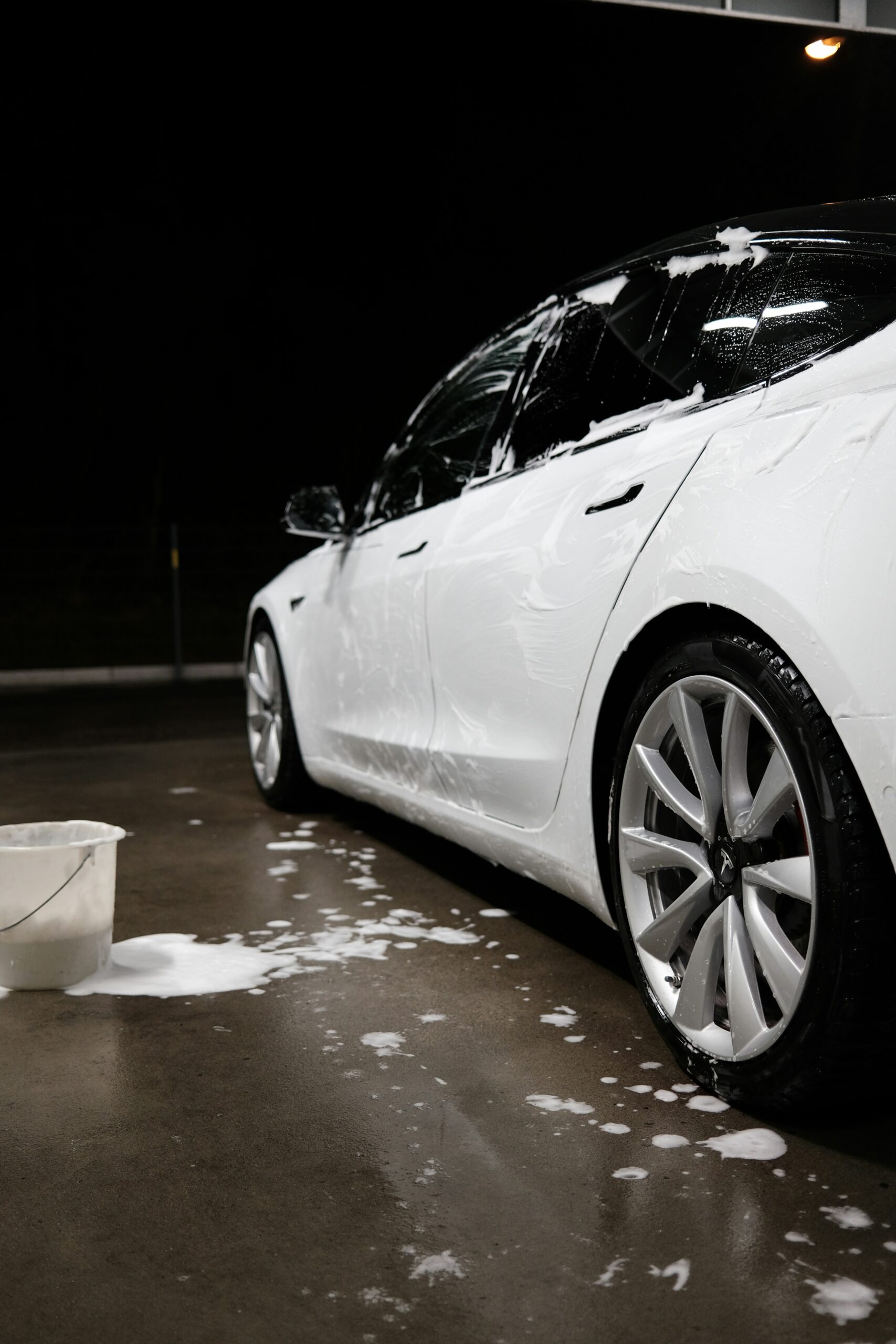
The Ultimate Guide to Car Detailing: Tips and Techniques for a Perfect Finish
Understanding Car Detailing: The Basics
Car detailing is a comprehensive and meticulous process aimed at restoring and enhancing a vehicle’s appearance, both inside and out. Unlike a basic car wash, which typically involves a simple exterior cleaning, professional car detailing covers every nook and cranny of the car, ensuring it looks and feels showroom-new. This level of care not only keeps a vehicle looking pristine but also plays a critical role in preserving its paintwork, which can prevent long-term damage from environmental factors.
The distinction between a basic car wash and car detailing lies in the depth of the procedure. While car washes usually involve washing the exterior and sometimes vacuuming the interior, detailing involves a series of detailed steps, including thorough exterior washing, clay bar application, waxing, and polishing—all designed to bring out the best in a car’s appearance. The interior receives equal attention, with detailed vacuuming, steam cleaning, and conditioning of the upholstery and dashboard. Even the engine bay is cleaned, helping to maintain engine performance and prevent deterioration.
Preserving the paintwork is one of the primary benefits of car detailing. Proper detailing can remove surface contaminants that can harm the paint over time, thereby extending the lifespan of the car’s finish. This not only maintains the car’s aesthetic appeal but also can significantly impact its resale value. A well-detailed car often commands a higher price on the market, as it gives the impression of being well-maintained.
Car detailing also enhances the driving experience. A clean, well-maintained interior creates a more pleasant environment, while a polished exterior enhances the car’s overall look. Routine detailing ensures that both the functional and aesthetic aspects of a car are cared for, which contributes to the vehicle’s long-term performance and owner satisfaction.
There are two approaches to car detailing: DIY and professional. DIY detailing can be cost-effective but requires significant time and effort, along with a good understanding of the products and techniques involved. Professional detailing, on the other hand, offers expert care but comes at a higher cost. Each approach has its pros and cons, and the choice depends on individual preferences and circumstances.
This overview sets the stage for a deeper dive into the various processes involved in car detailing, whether you choose to do it yourself or opt for professional services. Understanding these basics is the first step toward achieving that perfect finish that every car owner desires.
Exterior Detailing: Achieving a Gleaming Finish
Exterior detailing is an essential part of maintaining your vehicle’s aesthetics and longevity. The process begins with an initial wash and decontamination to remove dirt, grime, and other surface contaminants. Using a high-quality car shampoo and a microfiber wash mitt, gently clean the vehicle from top to bottom. This preliminary step sets the stage for a more thorough detailing process.
Following the wash, a clay bar treatment is crucial for removing embedded contaminants that ordinary washing cannot eliminate. Glide the clay bar over the lubricated surface to capture and lift particles like brake dust and industrial fallout, ensuring a smoother finish.
Once the surface is decontaminated, polishing is the next step. Polishing not only restores the paint’s original gloss but also addresses minor imperfections such as scratches and swirl marks. Employing a dual-action polisher with a suitable pad and polish compound can significantly enhance the vehicle’s appearance. Be cautious with the amount of pressure and speed to avoid damage to the paint.
Waxing or applying a sealant is vital for protection and achieving a long-lasting shine. Both options create a barrier that safeguards the paint from environmental elements. Wax typically offers a warmer, richer glow, but sealants are known for their durability and superior protection. Choose a product that suits your needs and preferences.
To achieve optimal results, selecting the right products and tools is paramount. Invest in high-quality wash mitts, clay bars, polish compounds, and waxes or sealants. Additionally, appropriate techniques and tools, such as microfiber towels and dual-action polishers, can make a significant difference.
Common mistakes to avoid include using the same cloth for both washing and drying, which can reintroduce contaminants. Also, skipping stages or rushing through the process can lead to subpar results. Proper exterior detailing is a meticulous practice that, when executed correctly, leaves the vehicle with a gleaming, showroom-worthy finish.
Interior Detailing: Creating a Clean and Comfortable Cabin
Interior car detailing is a meticulous process that significantly enhances the comfort and aesthetics of your vehicle’s cabin. The process involves several key steps, each targeting specific surfaces and materials, such as leather, fabric, and vinyl. The first and most essential step is thorough vacuuming. Use a high-powered vacuum with various nozzles to reach every nook and cranny, ensuring the removal of all dust and debris from seats, carpets, and tight spaces like air vents and under seats.
For leather seats and surfaces, select a specialized leather cleaner and conditioner to maintain the material’s natural luster and flexibility. Gently scrub the leather with a soft brush to lift dirt without damaging the finish, and then apply a conditioner to restore moisture and prevent cracking. For fabric seats and carpets, a high-quality fabric cleaner is imperative. Treat any stains individually by applying the cleaner directly to the spot, scrubbing softly with a brush, and then blotting with a clean cloth to remove residual moisture and soap.
Vinyl and plastic surfaces, such as the dashboard and control panels, require a different approach. Use a gentle, all-purpose cleaner to wipe down these areas, removing any grime and fingerprints. For a polished look and added protection, apply a UV protectant, which will help prevent fading and cracking due to sun exposure. Pay attention to all glass surfaces within the cabin as well. A streak-free glass cleaner will ensure clear visibility through windows, mirrors, and screens.
Odor elimination is another crucial aspect of interior detailing. An odor neutralizer or an air purifier can effectively remove lingering smells, leaving the cabin fresh and inviting. Close the process by checking for hard-to-reach and often-missed spots, ensuring no detail is overlooked.
Maintaining a clean and comfortable cabin between detailing sessions is also essential. Simple habits like removing trash regularly, using floor mats to protect carpets, and limiting eating and drinking inside the car can make a significant difference. These practices not only keep your car looking pristine but also preserve the longevity of the interior materials.
When detailing a car, the engine bay is often overlooked, yet it plays a crucial role in maintaining both the mechanical health and the aesthetic appeal of your vehicle. Regular engine bay detailing not only enhances the visual allure of your car but also supports its performance and longevity.
The Significance of Engine Bay Detailing
Maintaining a clean engine bay is essential as it helps in identifying potential issues like leaks, wear, or corrosion early. A well-maintained engine bay can also improve the resale value of your car as it signifies diligent care and upkeep. Moreover, clean surfaces can dissipate heat more efficiently, enhancing the overall performance and longevity of the engine.
Safe and Effective Cleaning Techniques
Before starting the cleaning process, ensure that the engine is cool. Always disconnect the negative battery terminal to prevent any electrical mishap. Use a plastic bag or specialized engine cover to protect sensitive electrical components, such as the fuse box, battery, and alternator, from water damage. Utilize a suitable degreaser—an automotive-specific degreaser works best—to loosen grime and grease. Spray it all over the engine bay, allowing it to sit for a few minutes before scrubbing with a soft-bristle brush.
Rinsing and Dressing the Engine Bay
Rinse the engine bay gently with low-pressure water, being cautious to avoid direct water sprays on the protected components. Dry the engine bay using a blower or microfiber towels. Once the area is dry, apply a non-silicone engine dressing to plastic and rubber parts to prevent cracking and to give them a renewed appearance.
Precautions and Recommended Products
When detailing the engine bay, always prioritize safety and precision. Using high-pressure water or harsh chemicals can damage components, leading to costly repairs. Invest in high-quality, pH-balanced cleaners and dressings specifically designed for automotive engines. Products such as Gunk Engine Cleaner or Meguiar’s Engine Dressing are well-regarded in the car detailing community for their effectiveness and safety.
By following these steps and using appropriate products, you can ensure that your engine bay remains in top-notch condition, supporting your car’s performance and extending its lifespan.



